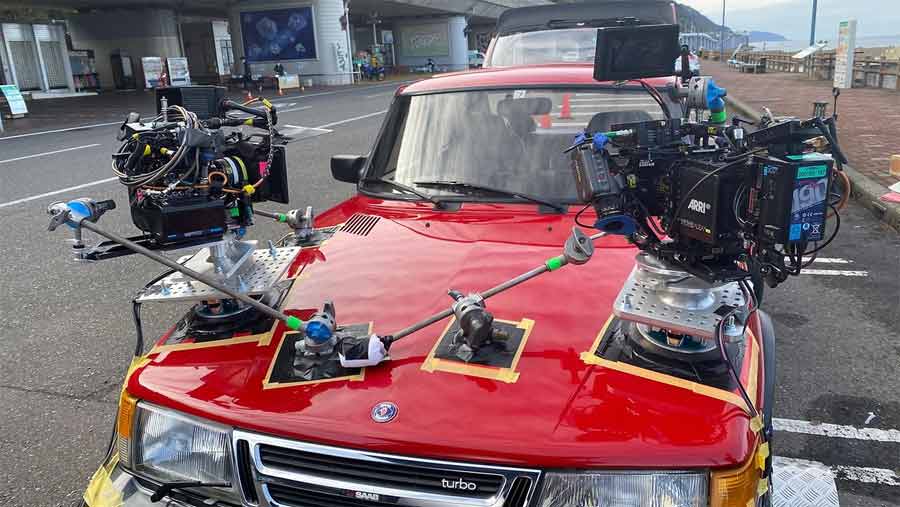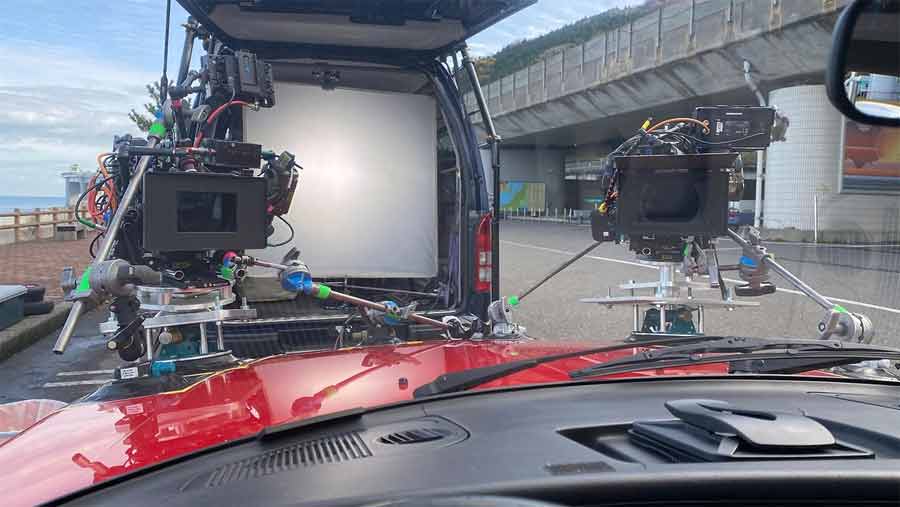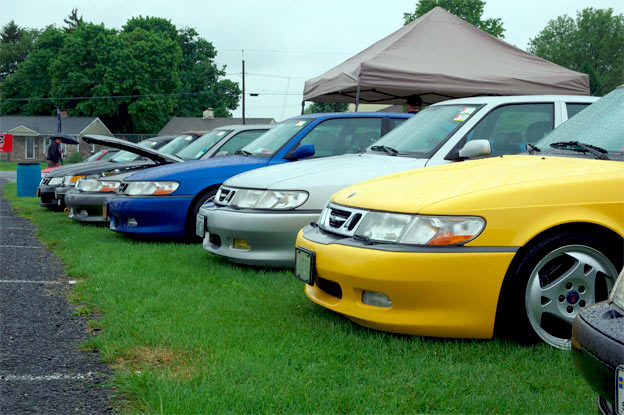We assume that the majority of fans of Saab cars, as well as fans of good movies, have by now already seen the great creation of the Japanese director Ryusuke Hamaguchi “Drive My Car“, which received great film reviews and numerous awards. Among other awards, the famous Oscar. And in the center of attention is one 1987 Saab 900 Turbo, as a symbolic place of confession and change.
If you haven’t seen this movie yet, we suggest you watch it. Until then, here are a few “behind the scenes” interesting facts, that is, how the film crew shot the scenes in and around the Saab convertible.
The red car stars in the film Drive my car directed by Ryusuke Hamaguchi, fresh winner of the Golden Globe for best foreign film and, in 2021, of the award for best screenplay, written by Hamaguchi himself with Tamakasa Oe, in Cannes. And of course, the mentioned Oscar is also there.
ARRI cameras and lights behind the cinematography of “Drive My Car”
Technically, behind the film stood the team from the company ARRI Group, which consists of f the business units Camera Systems, Lighting, and Rental, all dedicated to connecting creativity and future technologies for moving images. ARRI is a leading designer and manufacturer of camera and lighting systems as well as system solutions for the film, broadcast, and media industries, with a worldwide distribution and service network.

“Drive My Car” DP Hidetoshi Shinomiya and Lighting Director Daiki Takai JSL relied on the stability and versatility of ARRI ALEXA Mini, Ultra Primes and M-Series lights to capture the genuine and raw emotions of the characters from the Oscar-winning film.
“Director Hamaguchi has a very unorthodox style of shooting. After receiving the storyboard from the production, we worked together to create a running concept for the film. We wanted to express the ambiguity that exists within each individual and how we usually don’t know each other as well as we thought,” says Shinomiya.
“At the beginning of the film, when Oto was telling her story, you could only see a silhouette of her naked figure but not her face. This detail was deliberate to give the audience a sense of enigma and room to imagine who the character was and what she could be hiding behind her voice. Furthermore, as husband and wife, Kafuku and Oto’s relationship should have little to no gaps, but we used the image to convey otherwise,” continues Shinomiya. “The dialogue and images constantly contradicted one another, which was the director’s theme throughout the film.

To add more to the mystery, Shinomiya opted to shoot in cooler blue tones, taking inspiration from the films of Portuguese cinematographer Eduardo Serra and French director Claude Chabrol. “While I was reading the original story by Haruki Murakami, I imagined it in the color of twilight—neither brightly lit nor completely dark. I wanted to keep the light and color natural but with a unique twist,” says Shinomiya.
DP Hidetoshi Shinomiya JSC talked to Cinematography World about his approach to the cinematography:
“I wanted, at all costs, to avoid any trouble, in order not to miss shooting a single second of the actors’ finest performances, particularly as filming often took place in confined spaces, such as inside the car, or at low temperatures in the snow, in Hokkaido. With these factors in mind, I chose the Alexa Mini, with its expressive power, as my weapon of choice, along with Ultra Prime lenses.”
With many of the scenes shot in the titular SAAB car, size and versatility were also a concern for the camera team. He goes on, “The space inside the red Saab was extremely tight, but the ALEXA Mini was flexible enough where we could use two of them at the same time. It also had no fan noise.”
“Almost 90 percent of the scenes with the car were pre-calculated. Even the exact timing of the transition from exterior shots, where the characters were not yet visible on screen, to the frame gradually moving closer, finally showing their faces and expressions. Every part of it was intricately designed to give the audience time to think and be curious about what was going on inside the car before anything was revealed,” says Shinomiya.












Watched the film last eve. Start off by saying, loved the film. The cinema. The story. Dialogue, erm, I know it was intentional to have these long running monologues. One has to accept it, one has to get into the zone to take it in. Most comments would be quibbles. There is one moment tho that I felt was completely missed and could have made a far greater ‘moment’, impact, whatevs… and also realistic. I have never seen anyone get into a Saab (have owned now 10) and not go through the moments of “where does the key go”? It always gins up a moment, or moments, of some kind of exchange. When Misaki takes the keys for the first time and gets in the car… noooooooooo way does she just start it first time and off you go. No way. I’d say this is quibbling, but it is not. Not only was there a realistic moment missed, but so much more could have been packed into that ‘moment’, and the film was replete with these metaphor-ic meaningful moments. Not a gaff. But absolutely a missed opportunity on a slew of levels.
From the sort of person Misaki is, I am sure she looked up before of what the client car looks like and if she did her homework, she should be deep enough to know that all Saab key goes in the middle. (except the 9000.)
I loved the movie and saw it in a movie theater in my city, Kisarazu, small city facing the Bay of Tokyo. As for the key, she is a professional driver so she probably looked up the manual.
The only scene I didn’t understand is why it was taking place in South Korea. Anybody knows?